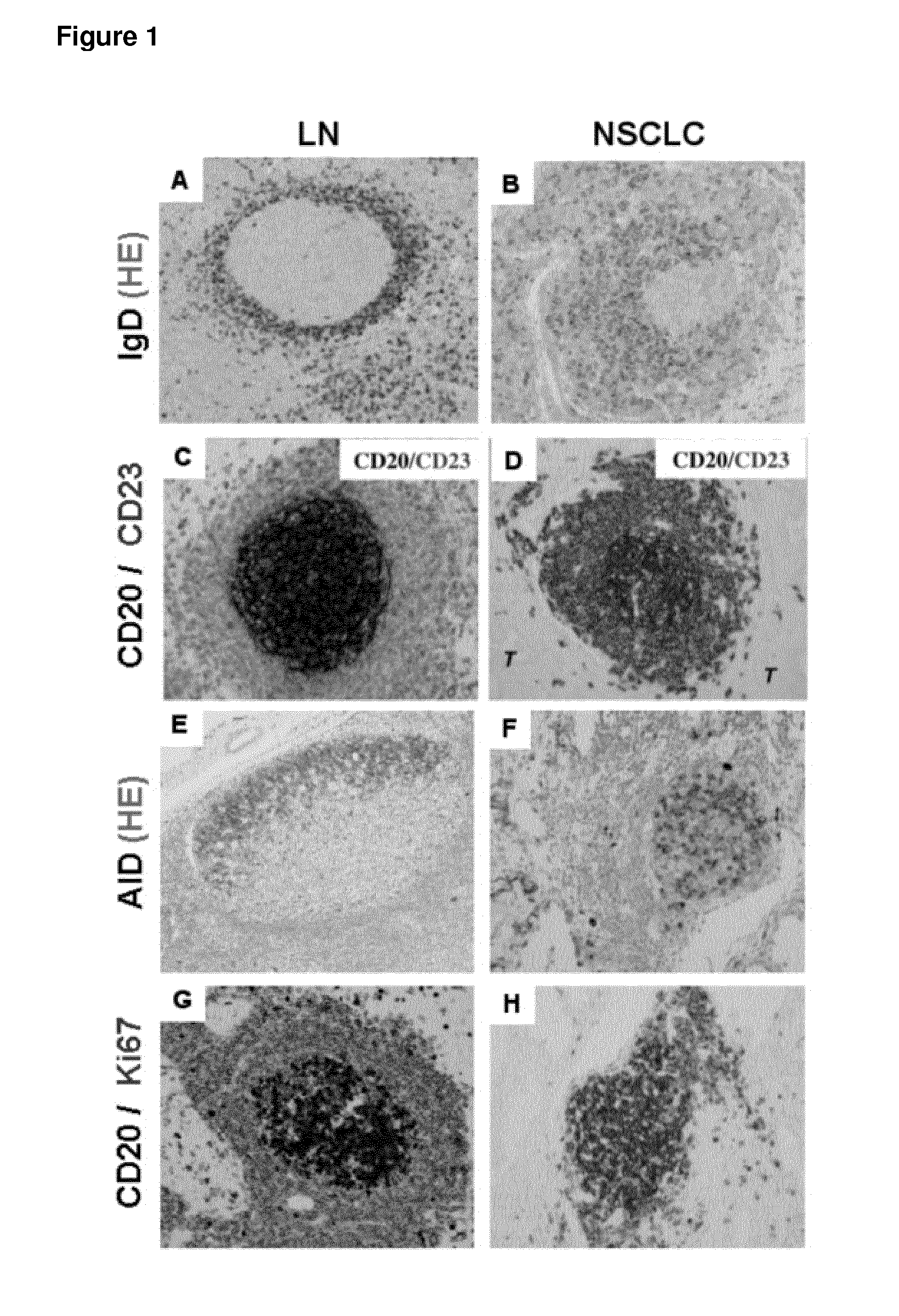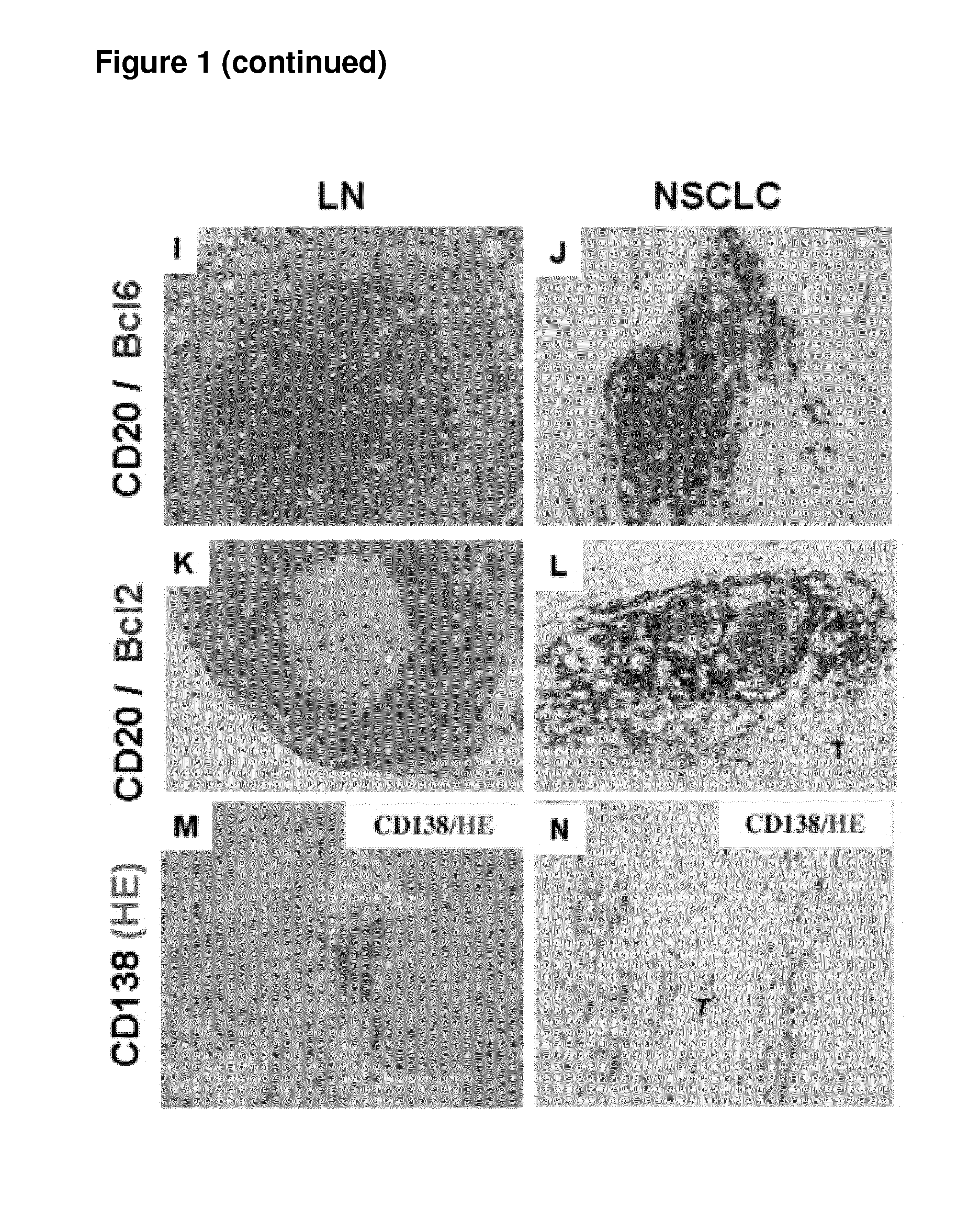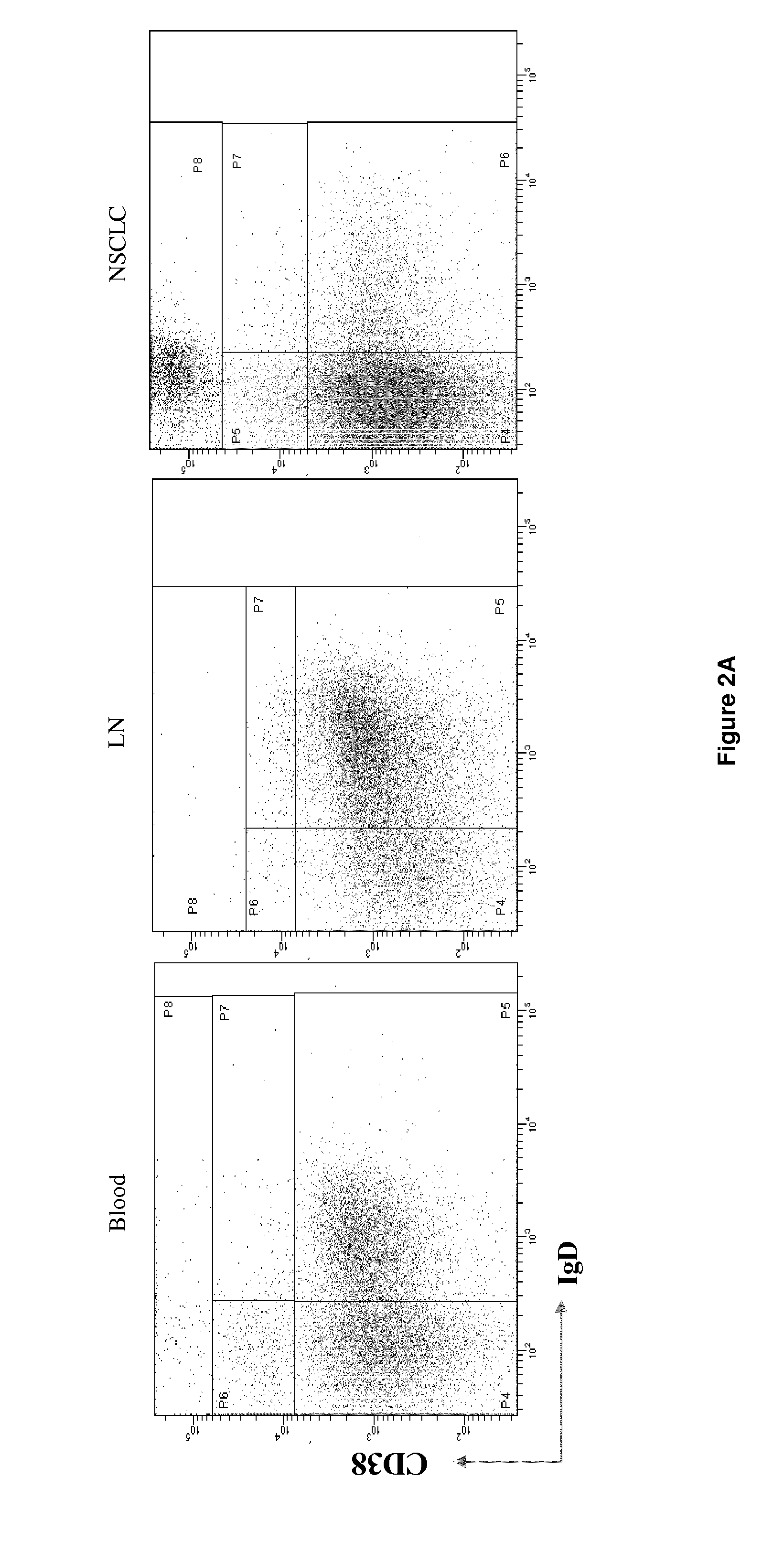Method for the prognosis of survival time of a patient suffering from a solid cancer
a solid cancer and prognosis technology, applied in the field of in vitro methods for the prognosis of the survival time of a patient suffering from a solid cancer, can solve the problems of inefficiency of tumor eradication by the immune system, and achieve the effect of accurately and accurately predicting the likely course or outcome of cancer in a patient, high probability and high accuracy
- Summary
- Abstract
- Description
- Claims
- Application Information
AI Technical Summary
Benefits of technology
Problems solved by technology
Method used
Image
Examples
example 1
[0052]Summary
[0053]The aim of the present study was to determine whether a protective humoral immune response takes place within Ti-BALT.
[0054]Here, we studied B-cell differentiation and migration to Ti-BALT by using complementary approaches (immunohistochemistry, flow cytometry, laser-capture micro-dissection, PCR low density array) on a series of 104 NSCLC patients. We have shown that B cell follicles of Ti-BALT present the same cellular composition and organization as in canonical secondary lymphoid organs. All stages of differentiation could be detected among tumor-infiltrating B cells. Interestingly, the major B cell compartments were compartments comprising effector cells (memory B cells and plasma cells). We have also shown that the somatic mutation and isotype switching machineries are activated in B cell follicles of Ti-BALT in accordance with the presence of Bm3 and Bm4 cells. We have also studied B cell recruitment to Ti-BALT in order to identify chemoattractants orchestr...
example 2
[0083]1—Prognostic Value of Follicular B Cells and of Mature Dendritic Cells in Patients Treated by Neo-Adjuvant Chemotherapy
[0084]The five-year survival of patients with early-stage NSCLC is 70%, and drops to 15% for late-stage metastastic NSCLC. Studies have shown that two-drug combinations are more efficacious than single-agent treatment (Schiller et al., 2000). Presently, patients with advanced NSCLC receive a neo-adjuvant polychemotherapy (cisplatin plus gemcitabine or carboplatin plus paclitaxel) in many North American and European hospitals (Bunn et al., 2002; Rosell et al., 2002). Now, more and more patients with early-stage lung cancer also receive neo-adjuvant chemotherapy. The response rate of two-drug combinations is between 20 to 30% in advanced NSCLC. Recent reports indicate that cytotoxic drugs are not only targeting tumor cells, but can indirectly promote tumor control by facilitating the development of an immune response within the tumor microenvironment (reviewed i...
example 3
[0087]Here, we evaluated the prognostic value of either follicular B cells, mature DC, or the combination of both types of immune cells in a retrospective study of 122 patients with advanced-stage of NSCLC and treated by neo-adjuvant chemotherapy. We demonstrated that the density of each immune parameter was correlated with a favorable outcome. The Kaplan-Meier curves indicated that the density of CD20+ follicular B cells was associated with longer overall survival (OS, P=0.007) (FIG. 5A). The median OS was 55 months for the patients characterized as having Foll-CD20 High tumors whereas the median OS was 18 months for patients with Foll-CD20 low tumors. The density of DC-Lamp+ mature DC was also correlated with a better clinical outcome (FIG. 5B, P=0.04). The median OS was 55 months for the patients with DC-Lamp High tumors whereas the median OS was 24 months for patients with DC-Lamp low tumors.
[0088]As Foll-CD20 and DC-Lamp positively influence the patient survival, we stratified ...
PUM
| Property | Measurement | Unit |
|---|---|---|
| survival time | aaaaa | aaaaa |
| cell density | aaaaa | aaaaa |
| cell densities | aaaaa | aaaaa |
Abstract
Description
Claims
Application Information
 Login to View More
Login to View More - R&D
- Intellectual Property
- Life Sciences
- Materials
- Tech Scout
- Unparalleled Data Quality
- Higher Quality Content
- 60% Fewer Hallucinations
Browse by: Latest US Patents, China's latest patents, Technical Efficacy Thesaurus, Application Domain, Technology Topic, Popular Technical Reports.
© 2025 PatSnap. All rights reserved.Legal|Privacy policy|Modern Slavery Act Transparency Statement|Sitemap|About US| Contact US: help@patsnap.com



